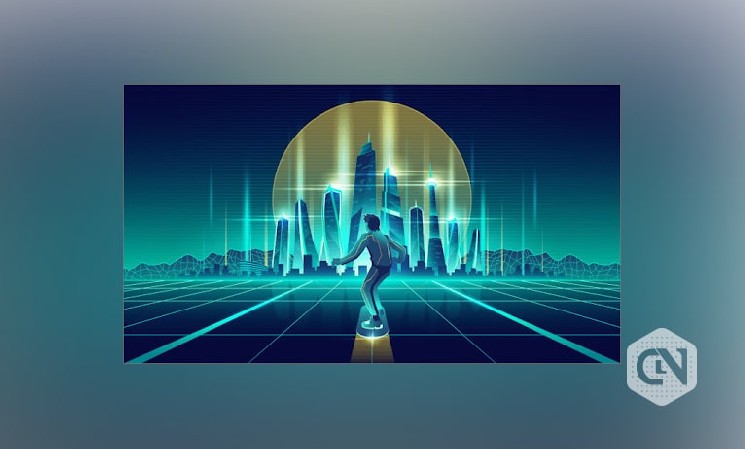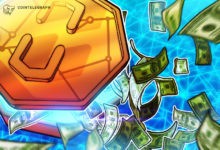Top five metaverses that will likely shape the virtual world in 2023

Could human beings soon exist in digital worlds? This idea has often been floated in the virtual gaming realm and is slowly becoming more than a possibility. You might have come across the ‘metaverse’ concept, combining emerging technologies such as Blockchain, Augmented Reality, and Virtual Reality to introduce digital worlds. In this new realm, internet natives can live as avatars and replicate real-world activities.
Although a relatively nascent tech niche, the metaverse is taking over the industry by storm. Both retail consumers and big corporations are expressing great interest in the ongoing developments. What’s more interesting is the strategic rebranding of tech titans such as Meta (formerly Facebook) to capture the upside potential of the metaverse. A recent report by Citi indicates this market could be valued at as much as $30 trillion by 2030.
Now to the big question, which metaverse worlds will thrive in 2023? While it may be a bit early for predictions given the uncertainty in macro factors, there are several projects that currently stand out. This is because of their fundamental value proposition and rising popularity within the Web 3.0 community. In the next section, we will highlight five metaverse-oriented projects that will likely be a big play in the coming year.
-
Jump.trade
Jump.trade is one of the NFT projects focused on bringing real utility to the Web 3.0 gaming space. At the core, this virtual ecosystem features a digital collectible marketplace and an NFT-based game dubbed Meta Cricket League (MCL). The latter product has been designed as a ‘hit-to-earn’ game, targeting India’s 2 billion cricket fan base.
While MCL is still in its beta stages, over 55,000 Player NFTs and Signed Bat NFTs sold out during the official launch. For context, these NFTs enable MCL gamers (users) to create virtual teams of bowlers and batsmen to compete in PvP matches. In return, winning players are rewarded with a kitbox comprising of upgrades to level up their NFT stats.
More interestingly, the Jump.trade Web 3.0 gaming ecosystem allows NFT owners to trade their cricket-backed digital collectibles through the marketplace. This means that one can purchase a more valuable NFT to increase the chances of winning; alternatively, MCL gamers can sell their NFT at a profit if the value increases after several wins.
With 2023 around the corner, Jump.trade is set to evolve into a fully-fledged Web 3.0 esports title featuring competitive gameplay and online events hosting. The project will debut a stadium NFT metaverse, enabling users to organize custom tournaments and tap into the global brand placements market.
-
The Sandbox
Currently, among the leading metaverse platforms, The Sandbox is a digital world extending on 15,000 virtual square kilometers of space. Owners of the land parcels (166,464) can engage in several blockchain-powered activities, including the creation of personalized NFT games, hosting virtual events, and exploring other lands (on-chain features) for different experiences and conquests.
Although still in the Alpha stages, The Sandbox enjoys over four million unique users, alongside partnerships with prominent brands such as Atari, Adidas, and The Walking Dead. More notably, The Sandbox metaverse is one of the Web 3.0 gaming ecosystems where users can actively participate. Some of the accessible environments include a BAYC museum, floating piano keys, and different gaming puzzles (visit, solve, find, kill).
For those interested in creating innovations on The Sandbox, it is not necessary to have coding experience. The platform features three powerful tools for this purpose; VoxEdit, The Game Maker, and The Marketplace. Meanwhile, explorers on The Sandbox can earn $SAND native tokens by completing various quests, ultimately climbing the ecosystem’s leaderboard.
-
Derby Stars
Derby Stars is a horse racing metaverse game that initially launched on the Terra blockchain but has recently migrated to Polygon. Unlike most of the cliché play-to-earn games, the Derby Stars Web 3.0 gaming ecosystem introduces a whole new experience. Players can compete in virtual races where their NFT horses are ridden by a personalized digital avatar.
But more importantly, it is possible to breed, train and trade one’s virtual horse through the Opensea marketplace and OnePlanet. As per the game’s design, Derby Stars horses are characterized by over 10 different body parts, each falling into one category (normal, rare, and unique). In addition, the horses are born with native talent; Runaway runner, Front runner, Stalker, and Stretch runner.
While Derby Stars has already sold its unique collection via three pre-sale events, they recently announced a Randombox event running up to October 31st. This freemint will feature 1,000 Randombox NFTs composed of 1 unique horse NFT, 199 rare/common horse NFTs and 800 starter pack NFTs. It is currently open to everyone and will be conducted in two stages; a winner (whitelist) mint and a public mint.
Looking into the future, Derby Stars plans to extend its metaverse product suite to include land parcels. This will enable gamers (NFT owners) to become virtual ranchers and reap more benefits from the play-to-earn model.
-
Voxels
Formerly Cryptovoxels, the Voxel metaverse ecosystem is based on the Ethereum blockchain. It is one of the VR-compatible virtual worlds, supporting some of the popular headsets; HTC Vive, Oculus Rift, and Oculus Quest. While Voxels is quite similar to Decentraland and The Sandbox, this metaverse ecosystem has fewer land parcels (5,919). For comparison, The Sandbox has 166,464, while Decentraland has 90,000 land parcels.
So, what can Web 3.0 natives do on Voxels, and why is it a promising project? At the core, the Voxel virtual world is user-owned; this means that land-owners have the flexibility to customize their digital properties for value addition. Fundamentally, players can purchase land and develop on it; the platform also features special editing tools, enabling players to create Cryptovoxel assets that could attract up to 10% in royalties from secondary sales.
With Ethereum’s transition to a PoS still on track, the Voxel metaverse now stands a better chance of thriving in 2023. Above all, its limited supply of land might be a game-changer in disrupting the current dominance of Decentraland and The Sandbox.
-
Roblox
Touted as a pioneer in the online gaming ecosystem, Roblox is among the earliest traditional video game companies to launch a metaverse. According to an article by Laura Higgins, Director of Community Safety and Civility at Roblox, the firm’s existing products perfectly fit into the metaverse definition,
“Roblox was envisioned as a space where billions of people could come together with civility and optimism. These people would create, make friendships and share experiences with their friends.”
That said, the Roblox metaverse has been gaining popularity thanks to a 50 million (plus) active user base that was already hooked to the platform. Additionally, notable brands such as Walmart and Fifa have recently partnered with Roblox to leverage the metaverse potential. The former has launched two virtual experiences, Walmart Land and Walmart’s Universe of Play, in a move to acquire the upcoming Gen Z market.
On the other hand, Roblox’s partnership with Fifa is expected to enhance social interactions during the Qatar 2022 World Cup. Participants will also be exposed to digital collectible rewards and other challenges. Although some might argue that it is a centralized metaverse, the Roblox digital world is worth keeping tabs on.
Bottom Line
The year 2022 has been quite a rollercoaster, with financial and social instability rocking some of the most advanced economies. However, technological innovations have continued to thrive regardless of the tough market conditions. As we can see in this article, the possibilities are bigger than most people would have imagined. We are now talking about virtual worlds (the metaverse). Is this the future? Only time can tell, but the trends show it is likely that human interactions will soon be based on Web 3.0 ecosystems.






 Bitcoin
Bitcoin  Ethereum
Ethereum  Tether
Tether  USDC
USDC  TRON
TRON  Dogecoin
Dogecoin  Cardano
Cardano  Bitcoin Cash
Bitcoin Cash  Chainlink
Chainlink  LEO Token
LEO Token  Monero
Monero  Stellar
Stellar  Zcash
Zcash  Litecoin
Litecoin  Hedera
Hedera  Dai
Dai  Cronos
Cronos  OKB
OKB  Tether Gold
Tether Gold  Ethereum Classic
Ethereum Classic  KuCoin
KuCoin  Gate
Gate  Algorand
Algorand  Cosmos Hub
Cosmos Hub  VeChain
VeChain  Dash
Dash  Tezos
Tezos  Stacks
Stacks  TrueUSD
TrueUSD  IOTA
IOTA  Basic Attention
Basic Attention  Theta Network
Theta Network  Decred
Decred  NEO
NEO  Qtum
Qtum  Synthetix
Synthetix  Ravencoin
Ravencoin  0x Protocol
0x Protocol  DigiByte
DigiByte  Zilliqa
Zilliqa  Nano
Nano  Holo
Holo  Numeraire
Numeraire  Siacoin
Siacoin  Waves
Waves  Ontology
Ontology  Status
Status  Enjin Coin
Enjin Coin  BUSD
BUSD  Pax Dollar
Pax Dollar  Hive
Hive  Lisk
Lisk  Steem
Steem  Huobi
Huobi  NEM
NEM  OMG Network
OMG Network  Bitcoin Gold
Bitcoin Gold  Augur
Augur  Ren
Ren